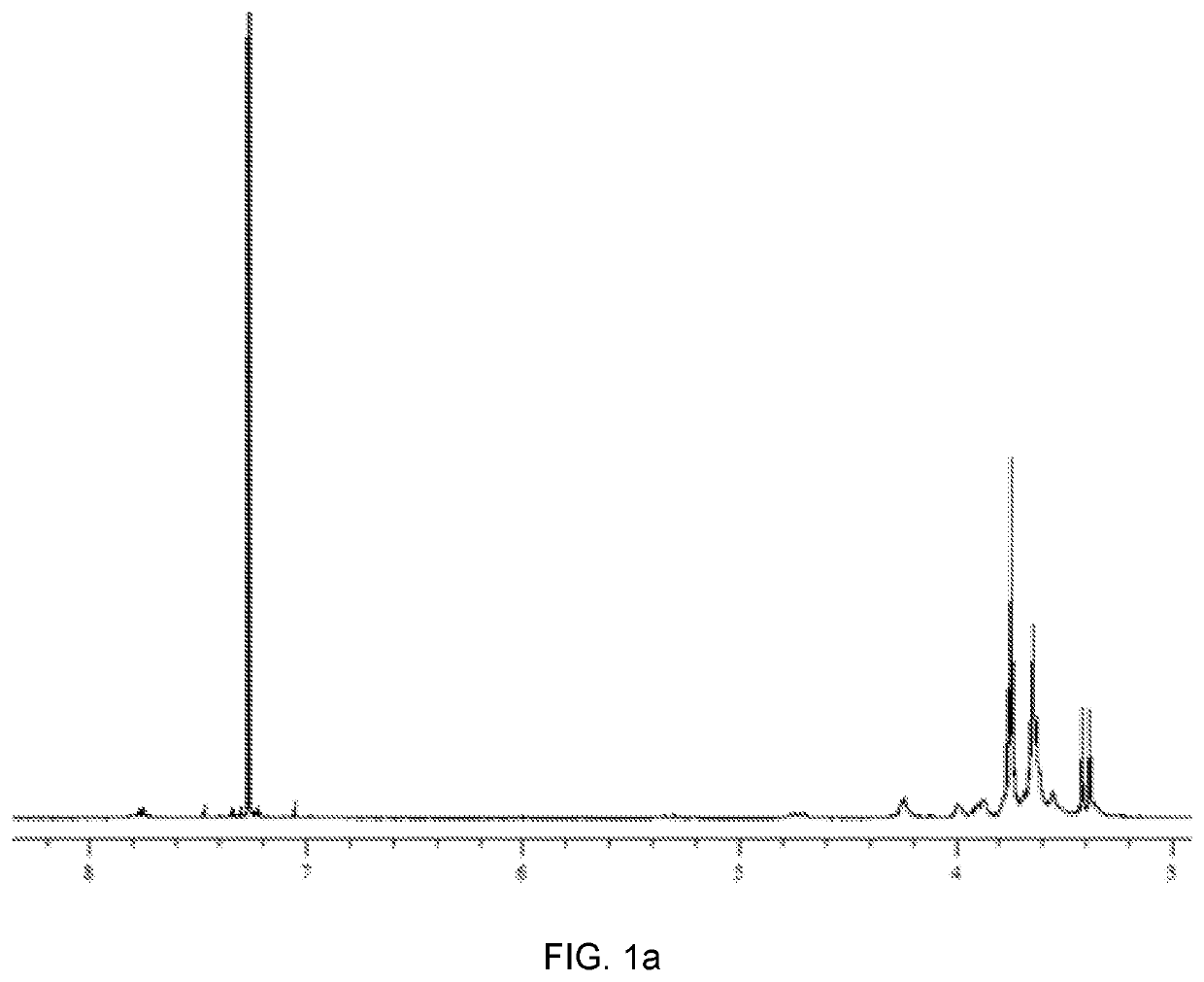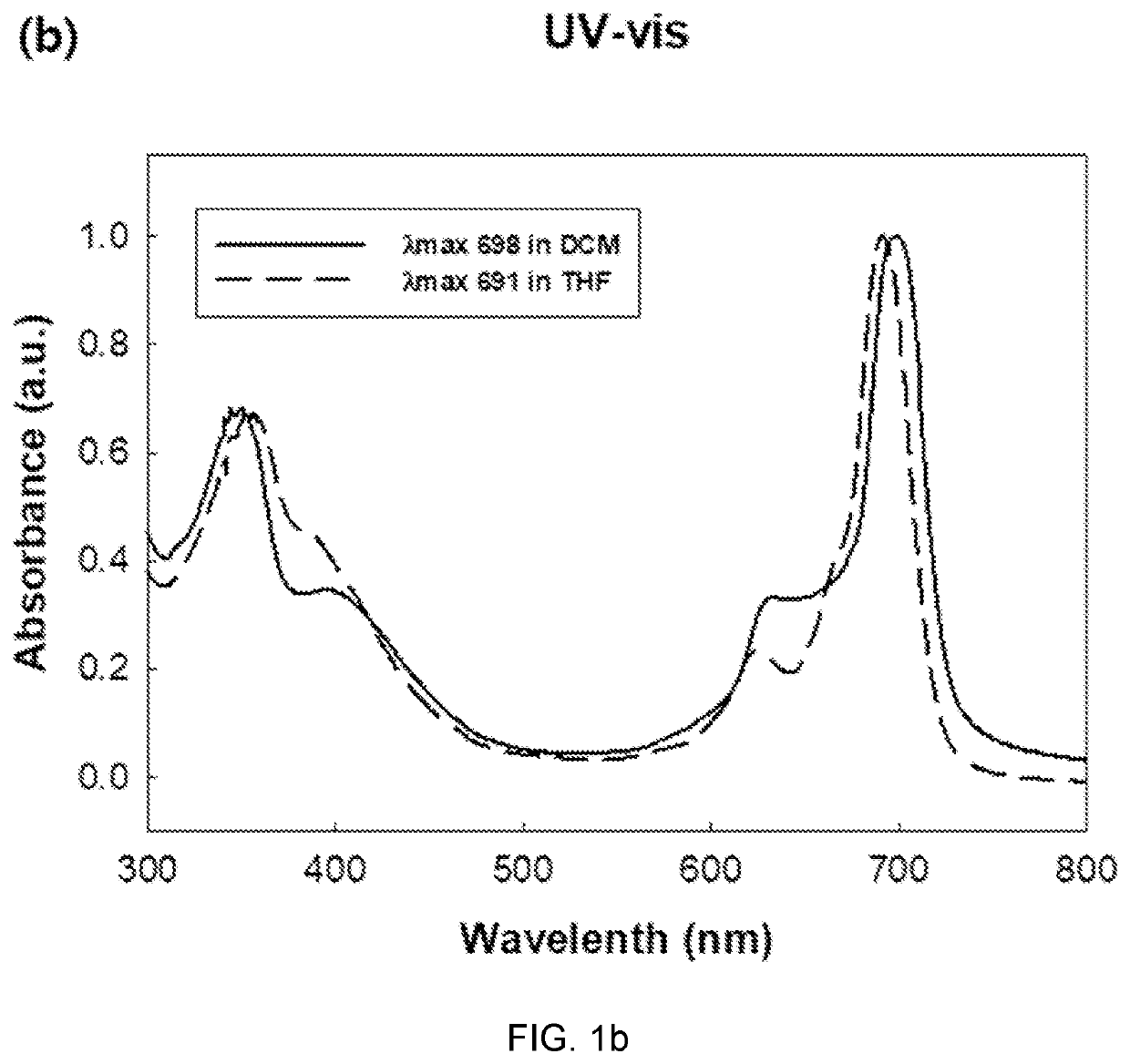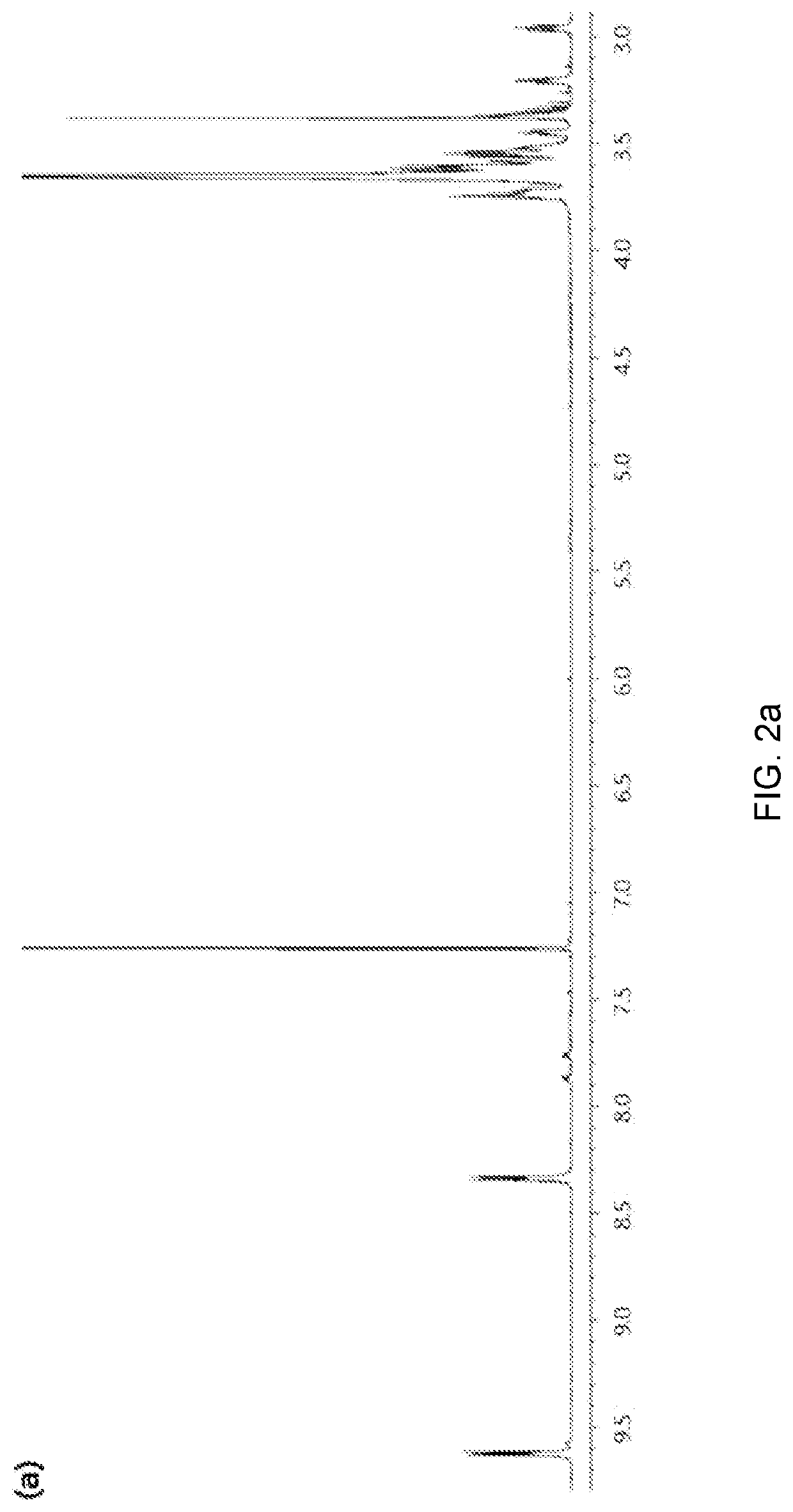Colorant for heat transfer fluid, and composition comprising same
a heat transfer fluid and colorant technology, applied in the direction of group 3/13 organic compounds without c-metal linkages, organic chemistry, group 3/13 organic compounds, etc., can solve the problems of rapid decrease in electric insulation, acid dyes, direct dyes, disadvantages of low color development, etc., to achieve physical and chemical stability, excellent color intensity, and good dissolution in antifreeze compositions
- Summary
- Abstract
- Description
- Claims
- Application Information
AI Technical Summary
Benefits of technology
Problems solved by technology
Method used
Image
Examples
preparation example 1
nt of Example 1
[0094]First, a phthalonitrile immediate having a triethylene as a substituent was synthesized. In brief, 4-nitrophthalonitrile (1 eq) and triethylene glycol monomethylether (1.1 eq) were dissolved in tetrahydrofuran (THF) and stirred in a nitrogen atmosphere. Then, Cs2CO3 (5.5 eq) was added, followed by heating 65° C. for 12 hours. Subsequently, the mixture was spontaneously cooled to room temperature and added with 100 ml of water. Extraction was carried out with dichloromethane (DCM). Thereafter, the organic layer was separated using a separating funnel and washed three times with water, followed by drying over MgSO4. Then, the dichloromethane was removed at room temperature using a rotary evaporator to obtain the synthesized 4-triethylene phthalonitrile intermediate.
[0095]Subsequently, the synthesized phthalonitrile intermediate was used for synthesizing a gallium-containing pigment. In brief, 4-triethylene phthalonitrile (4 eq) and GaCl3 (1.5 eq) were put in a pre...
preparation example 2
nt of Example 2
[0097]A colorant according to Example 2 was prepared in the same manner as in Example 1 with the exception of using a pigment bearing silicon instead of gallium. In brief, dry polyethylene glycol monomethyl ether (Mw 400, 3 eq) was put, together with a silicon-bearing pigment (1 eq), to a pressure tube to which dry toluene was then poured. A solution of NaOH (2.5 eq) in n-hexanol was added, followed by stirring in a nitrogen atmosphere. Then, the reaction mixture was cooled to room temperature, dissolved in DCM, and washed four times with water using a separating funnel. Water was removed with MgSO4 and DCM was removed using a rotary evaporator. A small amount of DCM was added to the reaction mixture which was then added to hexane while stirring, to afford as a crystal a colorant having the structure of the following Chemical Formula 2-5 according to Example 2 of the present disclosure.
preparation example 3
nt of Example 3
[0098]A boron-bearing pigment was synthesized using a phthalonitrile intermediate. In brief, BCl3 (1 eq, 1M solution in p-xylenes) was added at room temperature to 4-triethylene phthalonitrile (1 eq) in a flask in a nitrogen atmosphere and heated at 150° C. for 1 hour. After being cooled to room temperature, the reaction mixture was subjected to extraction with DCM. The extract thus obtained was washed three times with water and dried over MgSO4. DCM was removed using a rotary evaporator. Subsequently, a small amount of DCM was added again, and the resulting solution was dropwise added to diethylether while stirring, to afford a boron-bearing pigment as a crystal.
[0099]Then, a polyethylene glycol was introduced into the axis of the gallium-bearing pigment to prepare a colorant having the structure of Chemical Formula 1 according to the present disclosure. In brief, the synthesized gallium-bearing pigment (1 eq) and polyethylene glycol monomethylether (Mw 400 (i.e., PE...
PUM
| Property | Measurement | Unit |
|---|---|---|
| solubility | aaaaa | aaaaa |
| temperature | aaaaa | aaaaa |
| electric conductivity | aaaaa | aaaaa |
Abstract
Description
Claims
Application Information
 Login to View More
Login to View More - R&D
- Intellectual Property
- Life Sciences
- Materials
- Tech Scout
- Unparalleled Data Quality
- Higher Quality Content
- 60% Fewer Hallucinations
Browse by: Latest US Patents, China's latest patents, Technical Efficacy Thesaurus, Application Domain, Technology Topic, Popular Technical Reports.
© 2025 PatSnap. All rights reserved.Legal|Privacy policy|Modern Slavery Act Transparency Statement|Sitemap|About US| Contact US: help@patsnap.com



